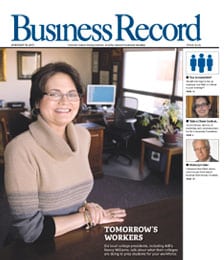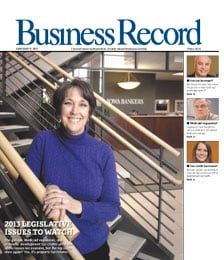Disappearing federal earmarks create uncertainty for projects

Last summer, a record number of Greater Des Moines Partnership members boarded a chartered airliner for the organization’s annual three-day lobbying trip to Washington, D.C. Their primary mission: buttonhole Iowa’s congressional delegation to earmark funding for key development projects in Central Iowa. Though obtaining funding has gotten tougher in recent years, no one imagined at the time that all of the potential earmarks would simply evaporate overnight.
Yet that’s exactly what has happened, as the Democrat-led Congress made good on its promise of earmark reform after such designated projects — referred to by critics as pork — reached an all-time high of $29 billion last year. With the passage of a continuing spending resolution this month, all spending earmarks that would have gone forward in fiscal year 2007 were erased.
For Greater Des Moines, a total of $65.6 million in potential funding earmarks requested last year by the Partnership, the bulk of them for regional transportation projects, were affected.
“It hasn’t come as a big shock to us,” said Jay Byers, the Partnership’s senior vice president for government relations. “We’ve been hearing since early December that this was likely to happen.”
The amount of earmarks funded for fiscal year 2008 will likely be half the level funded in fiscal 2006, said Susan McAvoy, communications director for Rep. Leonard Boswell.
“So obviously it’s going to be tighter,” said McAvoy, who said March 16 is the deadline for new earmark requests to be submitted to the various appropriations subcommittees.
“People from our congressional district are just starting to submit their requests,” she said. “I think it’s important that we let our agencies know that there will be cutbacks. I think subcommittees are also limiting the number of earmark requests received. I think the (congressional) members have to be a little wiser about how many they submit.”
Libby Jacobs, vice president of community relations for Principal Financial Group Inc., said the Principal Riverwalk project gets its federal money from several funding streams, with earmarks being just one.
“A good share of the money is coming through the (U.S. Army) Corps of Engineers; we’re still one of their priority projects,” she said. “It’s my understanding that the Corps is going to receive a lump-sum appropriation that they can divide between projects. Because we are a priority, we are hopeful the funding stream will continue with the Corps.”
The Riverwalk project, which is seeking $13 million in earmarks for fiscal 2008, is one of a dozen road or trail projects that will be recommended next month to the Des Moines Area Metropolitan Planning Organization to be highlighted as a “priority project” by the Partnership during its lobbying trip to Washington this summer.
“We feel that we came up with a list that was very regional and included projects from all parts of the Greater Des Moines area,” said Johnston Mayor Brian Laurenzo, who chairs the MPO’s Surface Transportation Program Funding Subcommittee.
Laurenzo said the loss of the fiscal 2007 earmarks wasn’t a factor in the selection process. “We don’t count that money until it actually arrives,” he said.
Some Greater Des Moines organizations had earmarks approved for this fiscal year that were eliminated, among them the Blank Park Zoo and Des Moines Area Community College.
DMACC President Rob Denson was in Washington last week to seek earmarks for several workforce training programs, including a $550,000 request to build a career academy in space donated by Whirlpool Corp. in the former Maytag Corp. building in Newton.
“No one would commit that there would be earmarks,” said Denson. Two earmarks he thought were likely to get approved this fiscal year, including funds for a proposed Story County Career Academy, were eliminated.
Blank Park Zoo will likely bring back two requests this year, said Dory Briles, the zoo’s vice president of development. One of the projects that had received approval was a $300,000 grant to refurbish a building at the zoo; another was for $250,000 to establish a visiting animal exhibit program.
“We’re just waiting for the guidelines to come out and then we’ll be reapplying,” she said. “We understand they’ll be more like a grant process.”
Though both projects are “very important” to the zoo, “you just have to realize that Congress has a huge job ahead with the budget situation,” Briles said. “So we can certainly appreciate the rationale behind this.”







